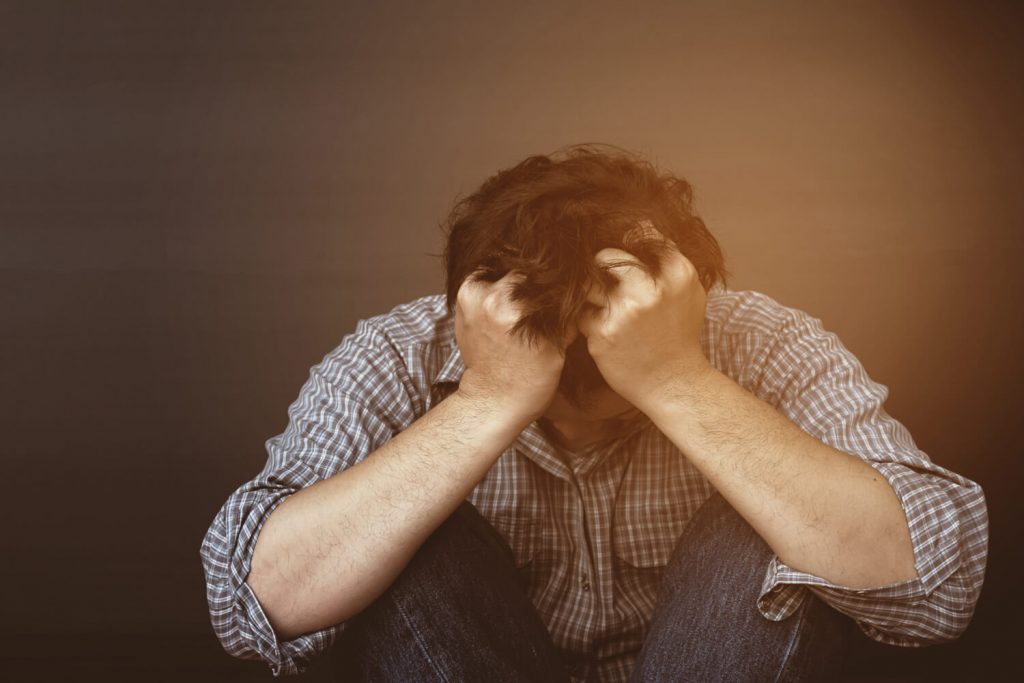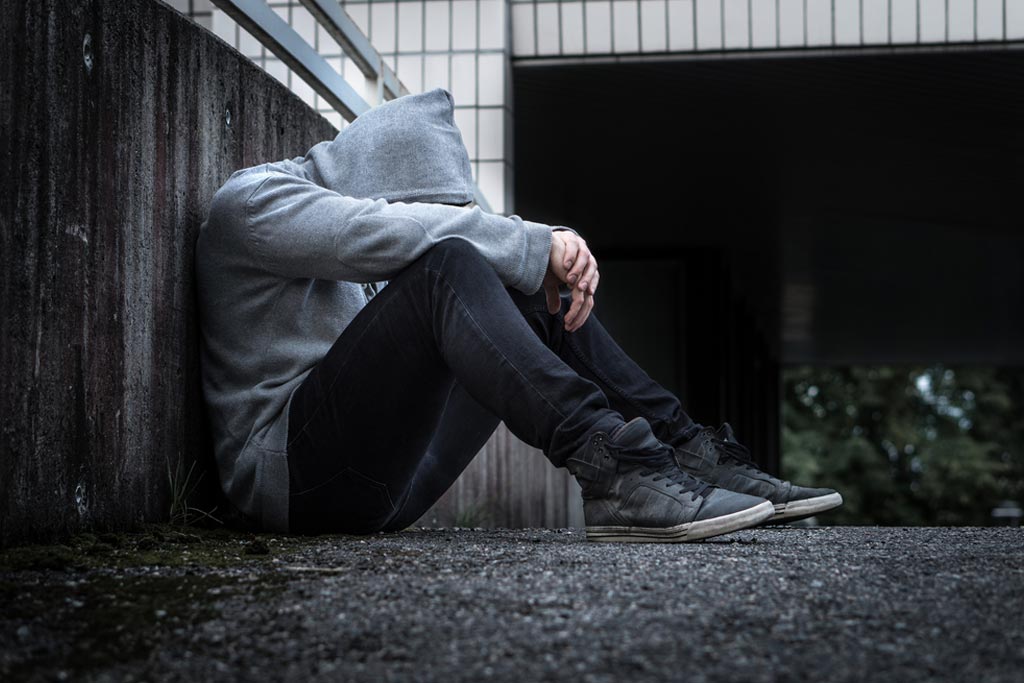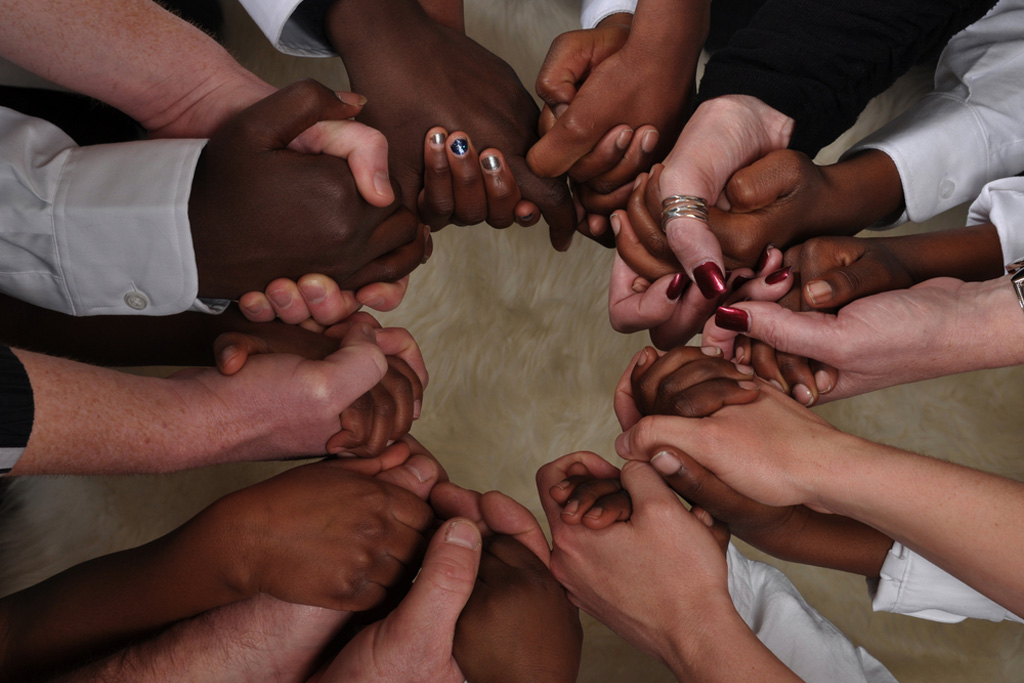Professors get tense when they lecture, accountants become anxious before and audit, students worry before exams, and hostesses get jittery before a party. Moderate “preparation anxiety” such as this is normal and helps us get energized to deliver our best effort.
The emotional tension that we commonly refer to as anxiety also functions as a signal of potential danger. But when the danger is exaggerated or based more on internal fears than external fact, anxiety hinders daily functioning; it becomes an anxiety disorder.
Anxiety disorders include…
OBSESSIVE-COMPULSIVE BEHAVIOR
Consuming fears of hurting others; excessive concerns about dirt or contamination; doubt and worry about things not being in exactly the right order.
PANIC ATTACKS
These unexpected, intense, anxiety states are characterized by thoughts of impending doom coupled with physiological symptoms. The heart begins to race and breathing quickens, as the victim of a panic attack gasps for air. Sweating, weakness, nausea, numbness, dizziness and feelings of unreality are also common. Victims fear they’re going to die, go crazy, or lose all control.
PHOBIAS
Phobias are excessive, disabling fears of a specific object or situation. They can stem from: anxiety attacks in which panicky feelings become associated with the places or situations in which they occur; specific experiences, such as a dog bite received in childhood; or social learning as when a child comes to associate fear with large bodies of water because a parent fears the water.
Phobias are divided into three broad categories…
- SIMPLE PHOBIAS are triggered by specific objects, animals or situations such as fear of heights, of enclosed spaces or of spiders.
- SOCIAL PHOBIAS are brought on by the presence of others. Victims of this phobia are afraid of being humiliated or embarrassed by showing their fear in front of others. Victims of this phobia are afraid of being humiliated or embarrassed by showing their fear in front of others. They may fear speaking before an audience or eating in restaurants.
- AGORAPHOBIA is the fear of open spaces. This may be being outside alone, standing in a crowd waiting in a line, or traveling by bus, train or car. It’s also termed fear of fear, since it often develops from a sudden panic attack that occurs away from home. The fear of future attacks escalates into fearing leaving the house at all.
Therapy Helps
TREATING ANXIETY
Eric Berne, M.D., often said that there were only three innate feelings; sadness, joy and anger. He believed that all other feelings were learned from the example of parents and others around us as children. If you had overly anxious parents, you may have unconsciously learned to imitate their anxiety, thinking it the appropriate response to various situations. Learned responses can be unlearned.
Many therapists teach their clients this 3-step approach to control anxiety and panic attacks:
- Stop the physical symptoms of anxiety. Anxiety usually constricts the chest muscles, causing breathing to become rapid and shallow and reducing the amount of oxygen that gets to the brain. The first step in alleviating anxiety is to focus on breathing deeply and slowly.
- Change your thinking. In a panic state, most people think disaster. Changing “oh my gosh! What am I going to do?” to “So what? It’s only an anxiety attack – it won’t kill me” puts you back in control.
- Change your catastrophic predictions about what’s going to happen when you’re anxious. Most people fear that they will faint when they have a panic attack or otherwise embarrass themselves in public. You can change this “movie in your head” to a more peaceful and pleasant one by recalling a time when you felt self-confident and happy.
HEALTH EFFECTS OF ANXIETY
Anxiety is hard on your body. 50% of people with anxiety disorders have seen a physician within the past 6 months for physical symptoms of anxiety. They consult…
- Neurologists for dizziness
- Cardiologists for chest pains, tachycardia and irregular heartbeats
- Gastroenterologists for digestive disorders
- Respiratory specialists for shortness of breath.
Although victims of anxiety disorders often seek help for their symptoms, only ¼ of them ever receive appropriate treatment. This significantly increases their chances for alcohol and substance abuse, depression, suicide, and sexual disorders. Heart disease, high blood pressure and other circulatory problems occur twice as often in people with high anxiety.
DRUG THERAPY; PROS & CONS
Tranquilizers and antidepressants are often helpful in treating anxiety. They’re especially useful for gaining immediate control over symptoms in crisis situations such as suicide attempts or when panic attacks prevent a person from going to work. However, they can cause high blood pressure, drowsiness, and withdrawal symptoms and/or seizures when usage is discontinued.
Since drugs treat only the symptoms of anxiety and not the ailment itself, the most successful approaches also include psychotherapy to help the victim deal with anxiety each time a feared situation arises. Relaxation techniques, deep breathing, self-hypnosis and biofeedback techniques have all proven effective in combating anxiety.
THINGS THAT SCARE US
Simple phobias aren’t daily terrors and don’t cause as much subjective distress as other anxiety disorders, but they’re the most common and can be traumatic.
The most common are:
- Claustrophobia: fear of closed spaces
- Topophobia: stage fright
- Electrophobia: fear of electricity
- Tropophobia: fear of moving or making changes
- Triskaidekaphobia: fear of the number 13
- Gephyrophobia: fear of snakes
- Batrachophobia: fear of reptiles
- fear of fire
- Spermophobia: fear of germs
- Pnigerophobia: fear of smothering
- Cynophobia: fear of dogs
SEX DIFFERENCES
WHO’S MORE ANXIOUS?
Women are more than twice as likely as men to experience anxiety disorders, especially between the ages of 18 and 44. Studies at the University of Tulsa show that men and women also get anxious for different reasons.
- 100% of the women in the study said they felt shy in the presence of authority figures, compared to 57% of the men.
- Women also felt more self-conscious around strangers (99% compared to 59% of men).
- The most anxious situation for men was asking for a date.
- 22% of the men (versus 10% of the women) were more anxious about “body-exposure” situations, such as undressing in a locker room or wearing a bathing suit.
TEST YOURSELF ARE YOU ANXIOUS?
To assess your level of anxiety, ask yourself whether you ever…
- have difficulty breathing, excessive sweating, dizziness, lightheadedness or a racing heartbeat?
- visit a doctor more than twice in six months because you think you’re having a heart attack, only to be told upon examination that there is no physical problem?
- Suddenly fear something terrible will happen?
- Avoid long car rides, travel on buses, subways, or airplanes?
- Fear leaving home without being accompanied by someone you know well?
- Avoid crowds or open spaces, such as shopping malls, parks, airports, or train stations?
- Feel tense and unable to relax most of the time?
- Spend excessive time worrying that bad things will happen?
- Get extremely anxious when you are the center of attention?
- Drink or take tranquilizers in order to cope with social occasions?
- Turn everyday tasks such as washing your hands, checking the alarm clock or locking the front door into obsessive rituals that you are unable to stop repeating?
- Have an inability to stop thoughts that don’t make any sense?
A “yes” answer to any of these questions indicates significant anxiety; visit a physician, or mental health professional that can help you identify the source of your anxieties and gain relief.
FACING YOUR FEARS
Everyone is afraid of something. If you look closely, you’ll see that the root of your fears is a lack of trust in your ability to handle whatever comes your way. Fear can be overcome if you accept it and keep going rather than letting it be a barrier to your success:Stop waiting for circumstances to be just right or until you’re sure you know what to de before you act. Fear doesn’t go away unless you take risks to make your dreams come true. With each accomplishment comes new strength and improved self-esteem. Keep a diary where you can write about the things that scare you. Notice where they occur, how anxious you feel and what you do to deal with the situation. Over time, you’ll be able to see what works best for you and also see how you’ve improved. Avoid excessive use of alcohol or caffeine. They will actually add to your anxiety rather than reduce it.
Acknowledge the positive things in your life. Anxious people tend to overlook their own strengths. When you’re scared, make a conscious effort to remember some past positive experiences instead of focusing on your failures. Avoid catastrophic thinking. Ask yourself what the worst possible outcome of the situation could be. You’ll usually find that it’s something you could survive, even though you wouldn’t enjoy it. Having faced the worst possibility makes it easier to deal with what does come. Acknowledge your fears. Many people try to mask their anxieties with activities such as exercising, reading, watching TV, or shopping. These may distract you from anxiety for a while, but when they become avoidance techniques, anxiety eventually increases. Stay focused. Much anxiety is the result of projecting yourself into future situations. Stay in the present – here and now – since that’s all you can control anyway. Take it one step at a time. If you are over-whelmed at the thought of confronting an anxiety-triggering situation, tackle one piece of it at a time. Give yourself permission to repeat steps as many times as necessary for you to be completely comfortable.
Genes vs. Environment
WHERE DOES IT BEGIN?
42% of agoraphobic patients report fears of separation in childhood. This supports traditional theories that anxiety comes from psychological factors; but recent research suggests it’s also a result of biological factors…
- Identical twins, (with exactly the same genetic makeup), are more likely to suffer from panic attacks than are fraternal twins, who share the same environment but only half the same genes.
- #When both parents have panic disorders, 40 – 50% of their children will also experience panic attacks.
- Vulnerability to panic attacks appears to be part of an inherited temperament that also contributes to shyness.
Coping Techniques
REMEMBER…A W A R E
The five step AWARE strategy can help you deal with anxiety:
- Accept the anxiety instead of fighting it. Replace your rejection, anger, and hatred of it with acceptance. Don’t make the anxiety responsible for how you think, feel and act.
- Watch your anxiety. Look at it without judgment, not labeling it as “good” or “bad”. As you watch the peaks and valleys of your anxiety, you’ll see ways to lessen it.
- Act with the anxiety. Normalize the situation by acting as if you weren’t anxious. Slow down if you have to, but keep going. Remember to breathe slowly and deeply.
- Repeat steps 1-3 until your anxiety reaches a comfortable level.
- Expect the best. What you fear the most rarely happens. However get rid of the magical belief that you have liked anxiety for good. By expecting future anxiety, you’re putting yourself in a good position to accept it when it comes again.




